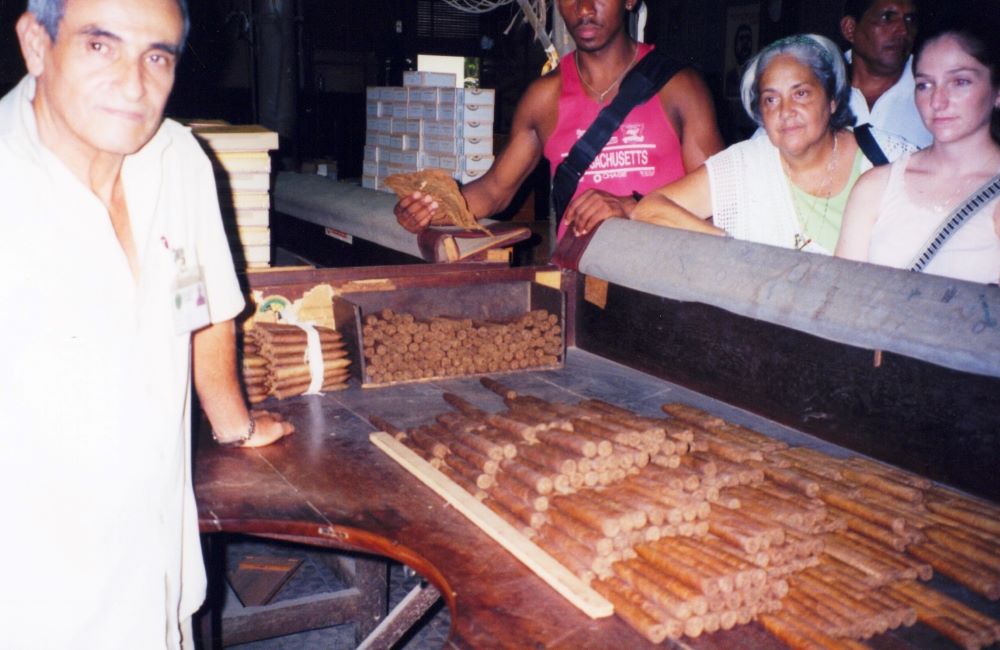As the granddaughter of Agustín Guerra, an orphan who worked as a field hand until he could establish a tobacco farm of his own in the 1920s, I confess to loving Cuba’s exquisite cigars—even though my father, Agustín’s son, cringed when first I told him I had visited several state-owned cigar factories in the 1990s. Dad had reason to be upset: although Communist officials never took over his family’s farm in the early 1960s (its small size did not merit the trouble), they did implement crop diversification schemes that devastated the capacity of Agustín’s and his neighbors’ land to grow tobacco. Taken in a Havana factory still called La Corona, this photograph portrays my students and their guide as they surround a cigar master engaged in a highly specialized task: sorting hand-rolled cigars into one hundred shades of brown. As he explained, all the possible tones of Cuban cigars had to match when sealed in a carefully crafted cigar box. HAVANA, JUNE 2001.
As this website nears its second year of exploration and reflection on Cuba’s lessons for the world, we also witness the continuing flight of more than half a million Cubans from the island for the United States. Since 2022, Cuba’s oldest-running Communist leaders—such as Raúl Castro, Ramiro Valdés, and others—have presided over a visibly consolidated crony-capitalist state defended by a tiny political elite and a massive security apparatus. Self-serving policies and recently decreed legal mechanisms for repressing dissent also reflect great historical irony: the very dictatorship of Fulgencio Batista that these leaders once overthrew has flourished anew. Given Cuba’s permanent state of crisis and the oddly stagnant policies of the last two US administrations, this Fotodiario edition of our website looks back at the Special Period, the post-Soviet era of the 1990s and early 2000s, that plunged all islanders into a watershed crisis of surreal proportions. Gems of the Archive and Ex-Libris celebrate UF’s acquisition of the Eduardo “Guayo” Hernández Collection, an incredible testament to the democratizing role of Cuba’s once-independent journalism. We hope this edition will invoke curiosity, knowledge, analysis, and the courage to debate and consider what kind of change might benefit the most Cubans among all of our Cuban Studies’ viewers.
